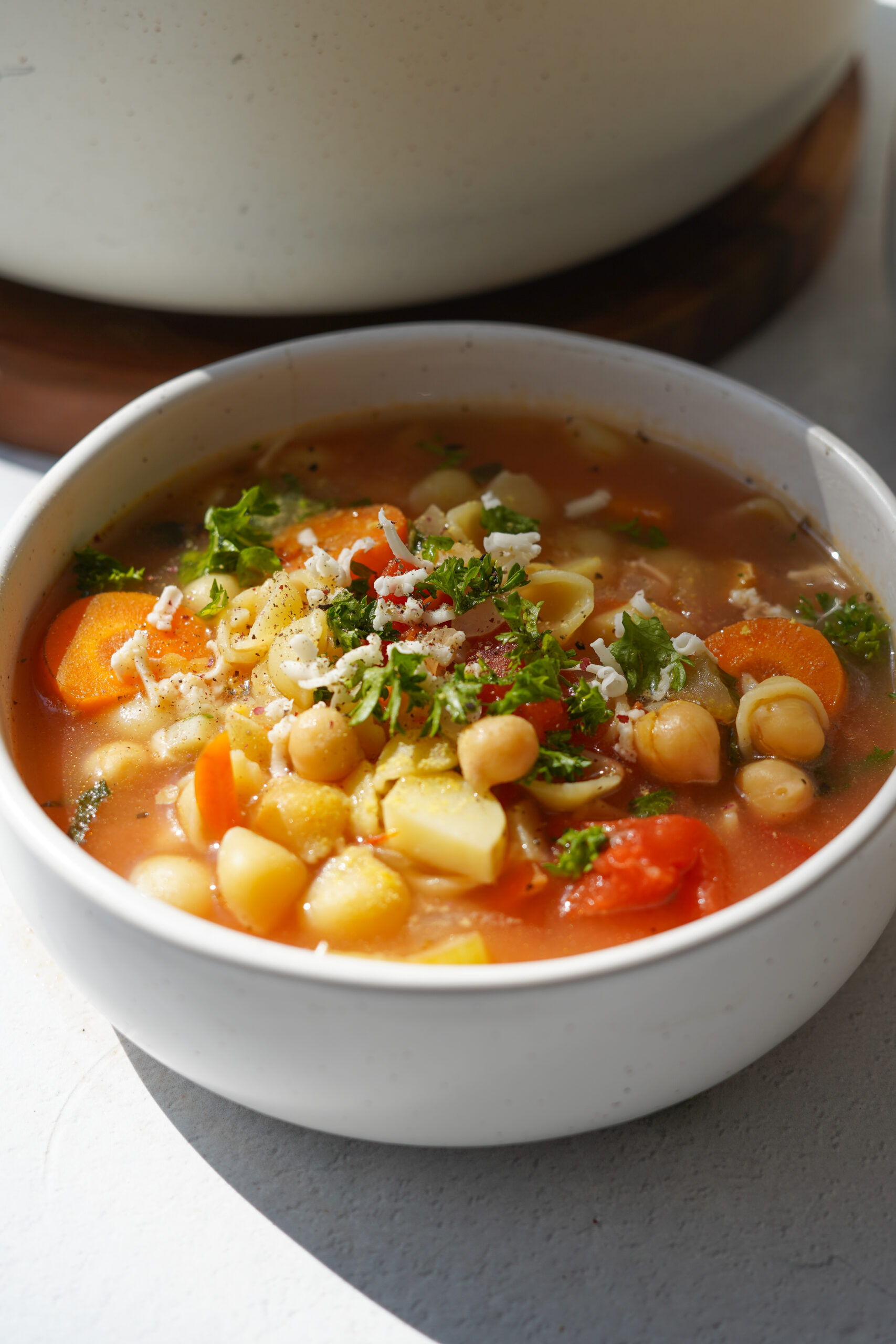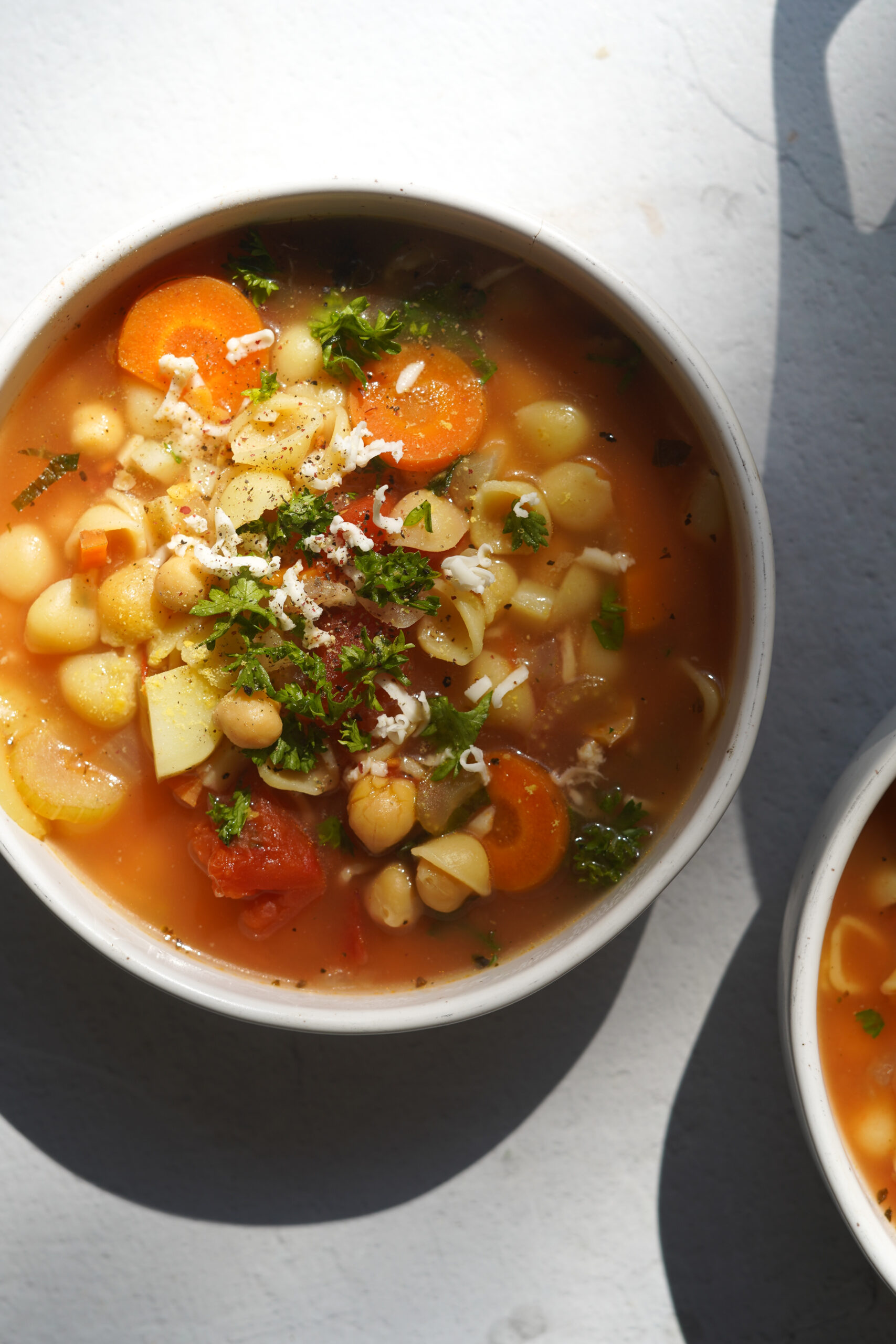“`html
plant Your Minestrone: A Comprehensive Guide to Growing Your Own Ingredients
Plant Your Minestrone: A Comprehensive Guide to Growing Your Own Ingredients
Imagine a warm, hearty bowl of minestrone, brimming with fresh, vibrant vegetables. Now, picture those vegetables plucked straight from your own garden. Growing your own minestrone ingredients is a rewarding experience, offering not only delicious, homegrown produce but also a deeper connection to the food you eat. This comprehensive guide will walk you through the process, from planning your garden to harvesting your bountiful minestrone ingredients.
Planning Your Minestrone Garden
Before you start digging, careful planning is essential. Consider the following factors:
Climate and Seasonality

Minestrone is a versatile soup that can be enjoyed year-round, but the vegetables you grow will depend on your local climate and the growing season. Research your region’s hardiness zone and average frost dates to determine the best time to plant each vegetable. Cool-season vegetables like carrots, cabbage, and peas thrive in spring and fall, while warm-season favorites like tomatoes, zucchini, and beans prefer the summer months.
Garden Space and Sunlight
Assess your available garden space and the amount of sunlight it receives. Most minestrone vegetables require at least six hours of direct sunlight per day. If you have limited space, consider vertical gardening techniques or container gardening. Choose vegetables that suit your available space and sunlight conditions.
Soil Preparation

Healthy soil is the foundation of a thriving garden. Conduct a soil test to determine its pH and nutrient content. Amend the soil with compost or well-rotted manure to improve its fertility and drainage. Ensure the soil is loose and free of weeds before planting.
Vegetable Selection
Minestrone is a flexible soup, so feel free to choose vegetables that you enjoy. Here are some common ingredients and their growing requirements:
Common Minestrone Ingredients and Growing Tips
Tomatoes
Tomatoes are a staple of minestrone, providing a rich, savory base. They require warm weather, full sun, and well-drained soil. Start seeds indoors 6-8 weeks before the last frost or purchase seedlings from a nursery. Provide support with stakes or cages as the plants grow.
Carrots
Carrots add sweetness and color to minestrone. They prefer cool weather and loose, sandy soil. Direct sow seeds in early spring or late summer. Thin seedlings to allow adequate space for growth.
Onions
Onions are essential for flavor in minestrone. They prefer full sun and well-drained soil. Plant onion sets or seedlings in early spring. Harvest when the tops begin to wither and fall over.
Celery
Celery adds a crisp texture and subtle flavor to minestrone. It prefers cool weather and moist, fertile soil. Start seeds indoors 10-12 weeks before the last frost or purchase seedlings. Provide consistent moisture and mulch to retain moisture.
Zucchini
Zucchini is a prolific producer that adds bulk and flavor to minestrone. It requires warm weather, full sun, and well-drained soil. Direct sow seeds or plant seedlings after the last frost. Harvest when the zucchini is young and tender.
Green Beans
Green beans add a crisp texture and nutritional value to minestrone. They prefer warm weather, full sun, and well-drained soil. Direct sow seeds after the last frost. Provide support with trellises or stakes for pole beans.
Cabbage
Cabbage adds a hearty texture and nutritional value to minestrone. It prefers cool weather and fertile, well-drained soil. Start seeds indoors 4-6 weeks before the last frost or purchase seedlings. Harvest when the heads are firm and compact.
Potatoes
Potatoes add a creamy texture and heartiness to minestrone. They prefer cool weather, full sun, and well-drained soil. Plant seed potatoes in early spring. Harvest when the foliage begins to die back.
Spinach
Spinach adds a leafy green boost of vitamins and minerals to minestrone. It prefers cool weather and fertile, well-drained soil. Direct sow seeds in early spring or late summer. Harvest leaves as needed.
Peas
Peas add a sweet, tender texture to minestrone. They prefer cool weather and fertile, well-drained soil. Direct sow seeds in early spring. Provide support with trellises or stakes for climbing varieties.
Garlic
Garlic adds a pungent flavor to minestrone. Plant garlic cloves in the fall, a few weeks before the first frost. Harvest in the summer when the tops begin to brown.
Basil
Basil adds a fresh, aromatic flavor to minestrone. Plant basil seedlings or cuttings after the last frost in a sunny location with well-drained soil. Harvest leaves as needed.
Parsley
Parsley adds a fresh, herbaceous flavor to minestrone. Plant parsley seeds or seedlings in a sunny location with well-drained soil. Harvest leaves as needed.
Planting and Growing Your Minestrone Garden
Starting Seeds Indoors
For vegetables that require a longer growing season, start seeds indoors 6-8 weeks before the last frost. Use seed-starting trays or pots filled with seed-starting mix. Provide adequate light and moisture for germination.
Direct Sowing
For vegetables that prefer direct sowing, plant seeds directly into the garden after the last frost. Follow the seed packet instructions for planting depth and spacing.
Transplanting Seedlings
Once seedlings have developed several sets of true leaves, they can be transplanted into the garden. Harden off seedlings by gradually exposing them to outdoor conditions for a week before transplanting.
Watering and Fertilizing
Water your garden regularly, especially during dry periods. Fertilize your plants with a balanced fertilizer or compost tea to provide essential nutrients.
Weeding and Pest Control
Keep your garden free of weeds to prevent competition for water and nutrients. Use mulch to suppress weeds and retain moisture. Monitor your plants for pests and diseases, and take appropriate measures to control them.
Harvesting Your Minestrone Ingredients
Harvesting at Peak Maturity
Harvest vegetables at their peak maturity for the best flavor and texture. Refer to seed packets or gardening guides for specific harvest times for each vegetable.
Succession Planting
To extend your harvest season, practice succession planting. Plant new crops of vegetables every few weeks to ensure a continuous supply.
Storing Your Harvest
Store your harvested vegetables properly to maintain their freshness. Root vegetables like carrots and potatoes can be stored in a cool, dark place. Leafy greens like spinach and cabbage can be stored in the refrigerator.
Cooking Your Homegrown Minestrone
Once you have harvested your homegrown vegetables, it’s time to create your delicious minestrone soup. Here’s a basic recipe to get you started:
Basic Minestrone Recipe
Sauté onions, celery, and garlic in olive oil until softened.
Add diced tomatoes, carrots, potatoes, and vegetable broth.
Bring to a boil, then reduce heat and simmer for 20 minutes.
Add zucchini, green beans, cabbage, and spinach.
Simmer for another 10 minutes, or until vegetables are tender.
Stir in cooked pasta or beans, if desired.
Season with salt, pepper, basil, and parsley.
Serve hot with a sprinkle of Parmesan cheese.
Enjoy the satisfaction of creating a delicious, wholesome meal from the vegetables you grew yourself. Growing your own minestrone ingredients is a rewarding and sustainable way to connect with your food and enjoy the bounty of your garden.
“`
